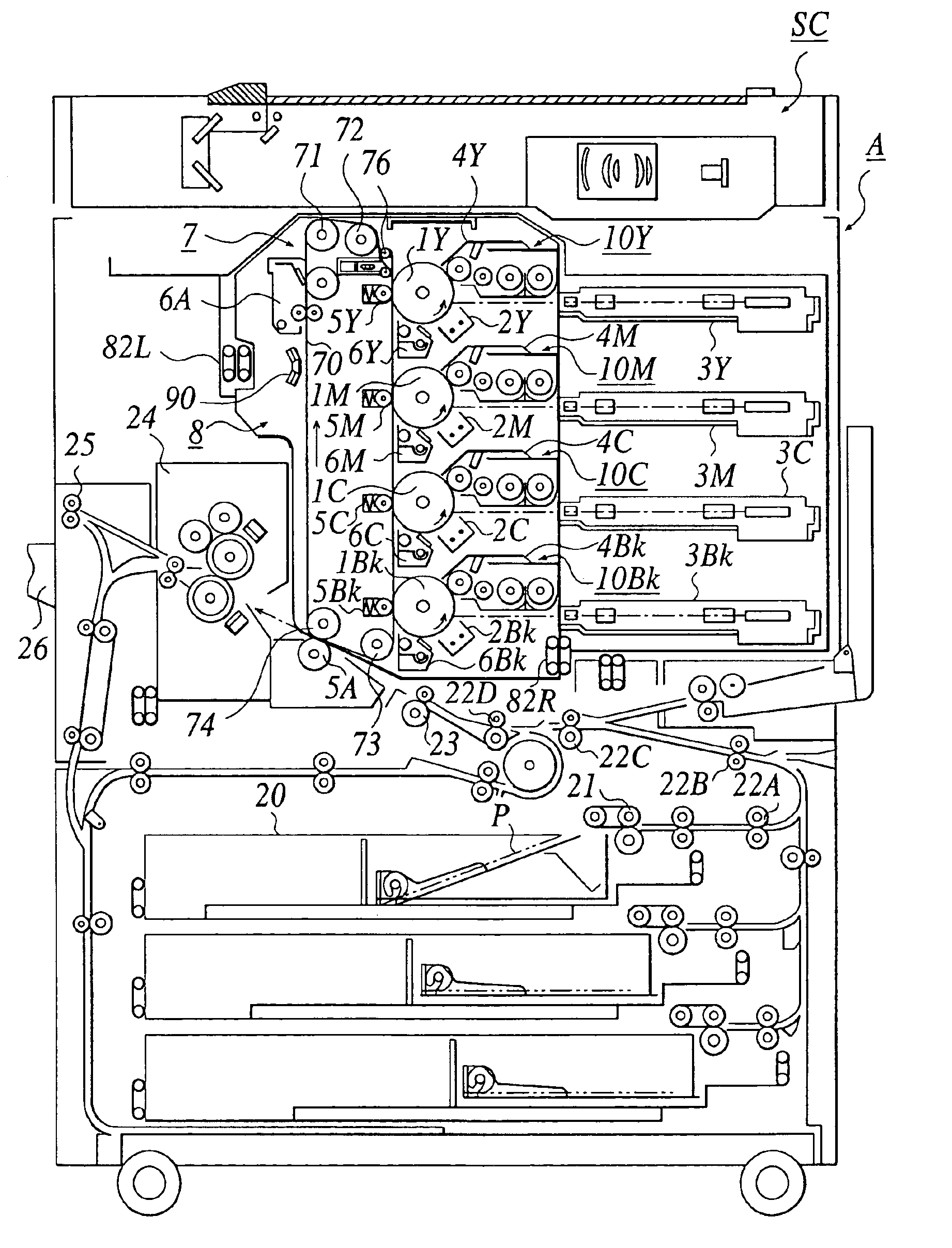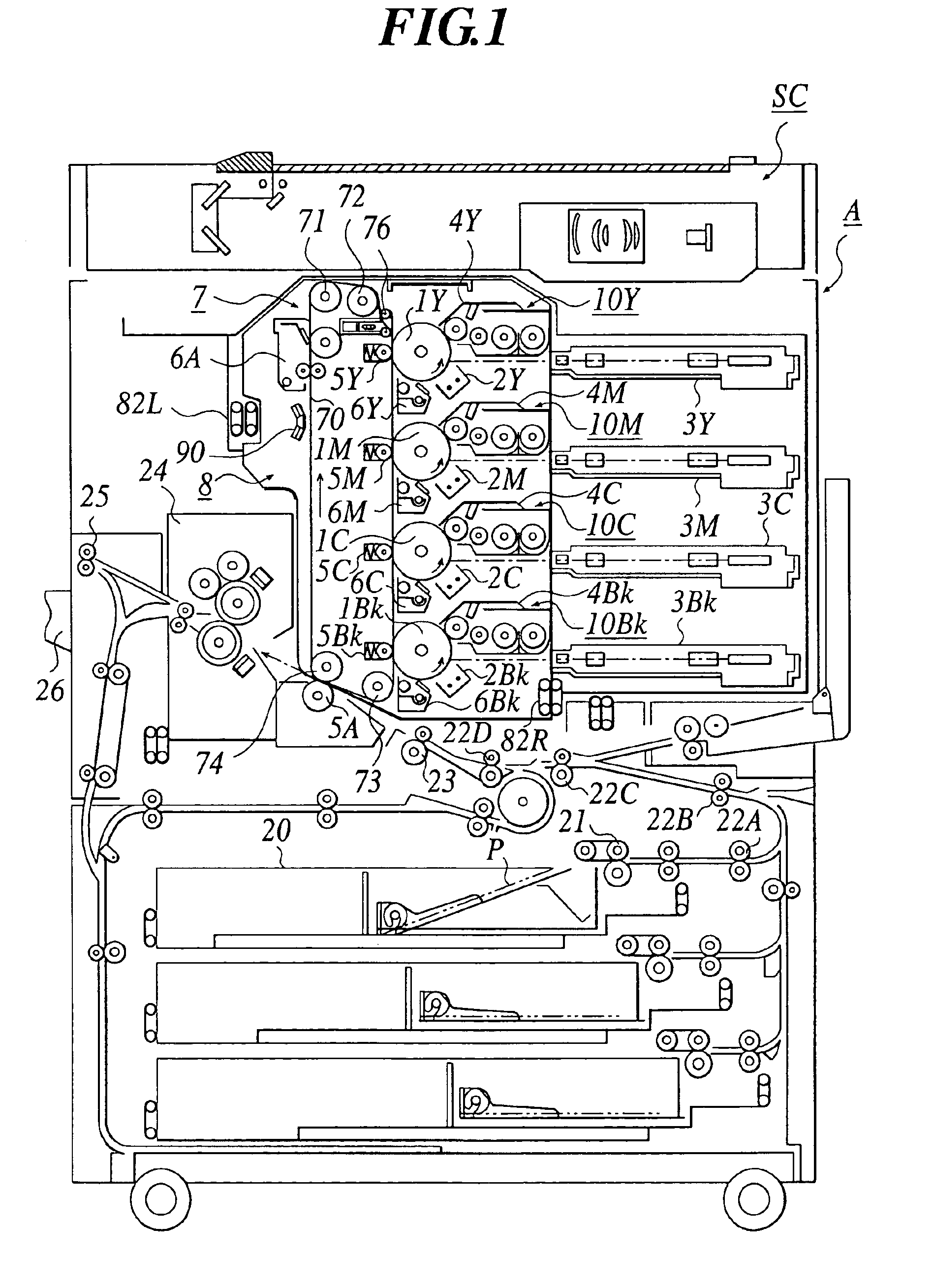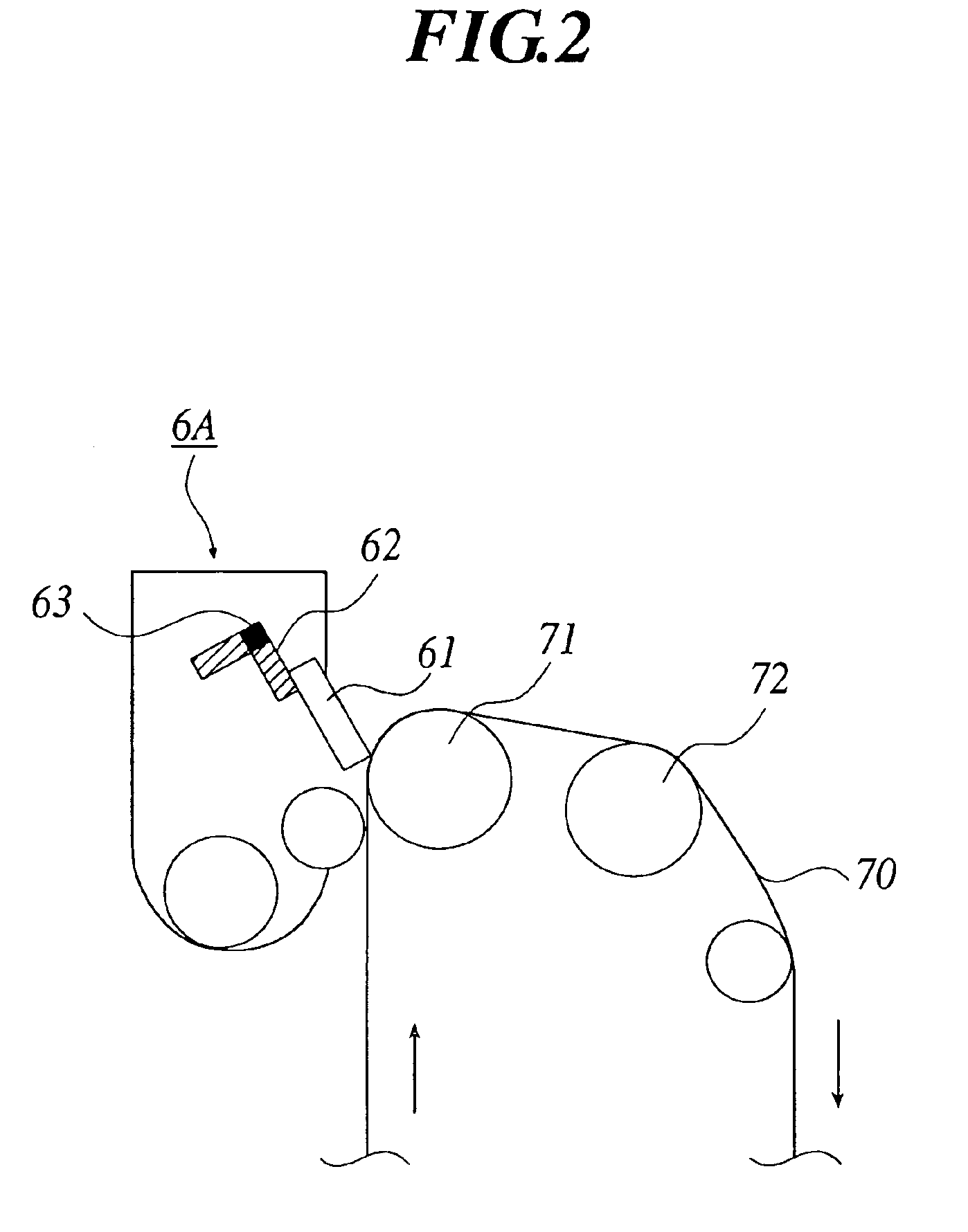Image forming apparatus and image forming method
- Summary
- Abstract
- Description
- Claims
- Application Information
AI Technical Summary
Benefits of technology
Problems solved by technology
Method used
Image
Examples
first embodiment
[First Embodiment]
[0228]FIG. 1 is a configurative section of a color image forming apparatus representing the first embodiment according to the present invention.
[0229]This color image forming apparatus is designated as the tandem-type color image forming apparatus and comprises 4 sets of image forming sections (image forming units) 10Y, 10M, 10C, 10Bk, an endless-belt-shaped intermediate transfer unit 7, a paper supply feeding member 21 and a fixing member 24. Over the main body A of the image forming apparatus, a manuscript image reading apparatus SC is installed.
[0230]The image forming unit 10Y for forming images of yellow includes a charging member 2Y arranged around a drum-shaped photosensitive member 1Y functioning as a first image carrier, an exposing member 3Y, a developing member 4Y, a primary transfer roller 5Y as a primary transferring member, and a cleaning member 6Y. The image forming unit 10M for forming images of magenta includes a drum-shaped photosensitive member 1M...
second embodiment
[Second Embodiment]
[0257]Now, the color image forming apparatus of a second embodiment according to the present invention will be described in the following. Although the tandem-type image forming apparatus, wherein the photosensitive members 1Y, 1M, 1C, 1Bk as a photosensitive member for electrophotography use were provided for each of the image forming units 10Y, 10M, 10C, 10Bk, respectively, was explained as the example in the first embodiment, an image forming apparatus, wherein a single photosensitive member is provided commonly for four image forming units used for forming black, yellow, magenta and cyans, respectively, is explained as an example in the second embodiment.
[0258]FIG. 6 is a configurative section of the color image forming apparatus of the second embodiment. The color image forming apparatus shown in FIG. 6 include, as the main components, a recording material feeding unit I arranged in a region extending from the right hand (right side in FIG. 6) of the apparatu...
example 1
[0312]In the following evaluations and comparisons, monochromic images containing both characters with the pixel ratio of 8% and half tone and color images were continuously printed on 50,000 sheets of A4 size with the use of the photosensitive groups and the developer groups (toner groups) composed as shown in Table 3 by means of a digital copying machine mounted with the image forming apparatus of the first embodiment including the respective image forming units of Y (yellow), M (magenta), C (cyan) and Bk (black) and the intermediate layer shown in FIG. 2 at a normal temperatures and humidity (20° C., 50% RH). The ratio of the monochromic images to the color images to print was fixed to a ratio of 9:1, that is, 9 sheets of monochromic images relative to one sheet of color images, in view of taking the printing ratio of monochromic and color images printed by the tandem-type color image forming apparatus into consideration. However, the printing was temporarily discontinued upon re...
PUM
 Login to View More
Login to View More Abstract
Description
Claims
Application Information
 Login to View More
Login to View More - Generate Ideas
- Intellectual Property
- Life Sciences
- Materials
- Tech Scout
- Unparalleled Data Quality
- Higher Quality Content
- 60% Fewer Hallucinations
Browse by: Latest US Patents, China's latest patents, Technical Efficacy Thesaurus, Application Domain, Technology Topic, Popular Technical Reports.
© 2025 PatSnap. All rights reserved.Legal|Privacy policy|Modern Slavery Act Transparency Statement|Sitemap|About US| Contact US: help@patsnap.com



